home
>
Blog
>
Design
>
Secrets of artistic calligraphy so that your handwriting is exceptional
Secrets of calligraphy …
Hello good! I am one of the people who throughout his life has always said: “What beautiful handwriting you have!” Clearly, my handwriting is not, so I was saying it with some envy. Sana, of course. I know that many feel identified with my case, so I decided to write this article on artistic calligraphy to learn together and go from having an ordinary letter to an extraordinary one.
It is true that we write less and less on paper, but whether we want to or not, we will never stop doing it. It will always be necessary. So, if you are wondering how to learn artistic calligraphy, you have come to the right article. Together we will learn, step by step, to have an enviable handwriting thanks to artistic calligraphy. Ready?
Index:
- Artistic calligraphy and lettering: are they the same?
- What is artistic calligraphy?
- Types of artistic calligraphy
- What materials do I need to learn artistic calligraphy?
- Guide to learning artistic calligraphy
Before starting to learn artistic calligraphy, it is right and necessary to solve one of the most common doubts when it comes to this topic: Are there differences between calligraphy and lettering?
Many believe that there are not, but the truth is that, while calligraphy focuses on the art of writing, lettering is the art of drawing words. However, they share the same principle. Luis Lili, our teacher of the online Lettering course: The art of drawing letters explains it better.
“Lettering comes from the same principle as calligraphy, but it is more flexible with the procedure and materials. You can use markers, brushes or even digital media. Lettering is not writing, it is drawing.”
Now that we are clear about the concept of lettering, it is time to learn more about artistic calligraphy. If you want to know more about lettering, we will show you how to do it step by step.

If words are drawn in lettering, they are written in artistic calligraphy. It sounds simple but it is not so simple, since artistic calligraphy consists of writing but in an aesthetic way.
The idea of artistic calligraphy is keep the same writing style in a text and that, above all, it manages to understand itself, since readability is one of its great characteristics.
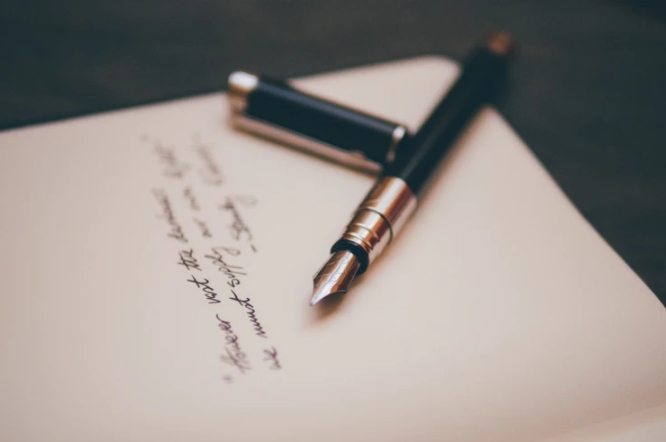
Image: Unsplash
To achieve that legibility and achieve a beautiful handwriting, you need to get the right pulse, which, incidentally, will also allow us to be consistent with the writing style.
But do not worry! Achieving perfection in artistic calligraphy takes practice, practice and more practice. We will get to the tips to learn artistic calligraphy without dying in the attempt.
Artistic calligraphy not only has a technique and for that reason It is mainly divided into four types, which are determined, basically, by origin. We tell you about them below.
Table of Contents
Western artistic calligraphy
Also known as Latin calligraphy, this technique is based on the Greco-Roman alphabet. It is written from left to right and there are an infinity of styles of this type of artistic calligraphy.
In addition, in this type of artistic calligraphy we will also find a good variety of styles of punctuation marks or accents.
Arabic artistic calligraphy
It is likely that the technique applied in this type of artistic calligraphy be one of the most complicated. This, because all the letters are joined, which means that you will not be able to separate the pen from the sheet.
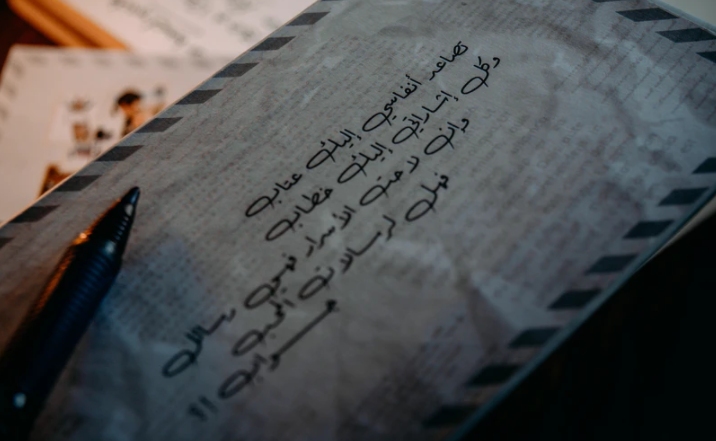
Image: Unsplash
Arabic artistic calligraphy may vary according to geographic or ethnic area and to write it an instrument called a calamus is used. In this case, writing is done from right to left.
Chinese artistic calligraphy
Another technique that stands out for its level of complexity. Chinese artistic calligraphy has different spellings, which means that different symbols could be used to write the same word. By the way, find out all about the India ink technique.
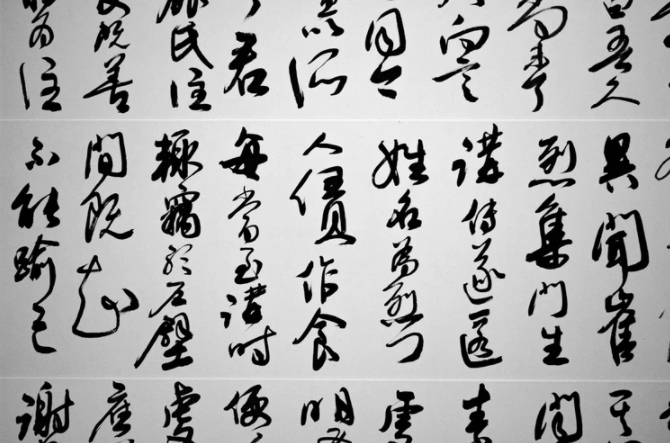
Image: Unsplash
Shodo artistic calligraphy
Although shodo artistic calligraphy is Japanese, it is said that its origin was in Chinese writing. To write it, tools such as a brush, Chinese ink and rice paper are used.

Image: Unsplash
This first part has helped us to learn the concepts and types of artistic calligraphy, which are more than necessary to start practicing and improving our technique.
Now is the time to move on to execution. The first thing we need to know is what materials we will use to learn to do artistic calligraphy. Take note!
If you want to improve your penmanship, download this free guide you must

While to learn artistic calligraphy no large investment required, we will find objects that can intimidate us a bit. Do not panic! It is normal.
To learn artistic calligraphy, the ideal is to have all the materials that we will detail below; Nevertheless, we can start with a graph paper and a pencil or pen. As we practice, we can progressively go to the pen.
Having clarified this point, these are the materials used in artistic calligraphy:
📌 Feather: the pen is the support in which we will place the pens. They can be made of different materials (I recommend wooden ones) and of two types: straight and oblique. We invite you to learn more about calligraphy pens.
📌 Nib: the nib is the metal piece that goes on top of the pen; that is to say, the part that we immerse in the ink. They stand out for being flexible and for having a small hole in which the ink will be retained.

Image: Unsplash
📌 Ink: a small bottle of black ink will be enough to start learning artistic calligraphy. Learning with other ink colors is not recommended due to their thickness.

Image: Unsplash
📌 Paper: Good paper is essential for practicing artistic calligraphy because it will not excessively absorb ink. The paper should not be too thin or too thick, so a craft type would be perfect. There are some notebooks that have points, which will serve as a guide.
Clever! Those are the materials we need to delve into the fantastic world of artistic calligraphy. Remember that you should not be overwhelmed thinking about these materials at first. If you can get them (or have them), fine; otherwise, with basic tools will be enough. Step by step, friends. Shall we start?
Let’s do it! Now that we have the materials, it is time to start practicing. With these exercises to learn artistic calligraphy you will take the first step to have a beautiful calligraphy. Go!
Conditions the environment
The first thing we have to do to learn artistic calligraphy is to have an appropriate environment. To start practicing artistic calligraphy we need good lighting and a wide table.
We have to position ourselves in such a way that the hand with which we write don’t cast a shadow on the paper. For this, it is very important to be in good posture.
The pen grip
As we mentioned above, in artistic calligraphy we have to be constant in writing. To achieve this we must properly hold the pen. How to do it? We explain it to you!
To grab the pen (pencil or pen) you must relax your fingers, do not squeeze it. It should be between your thumb and index finger and should rest on your middle finger.
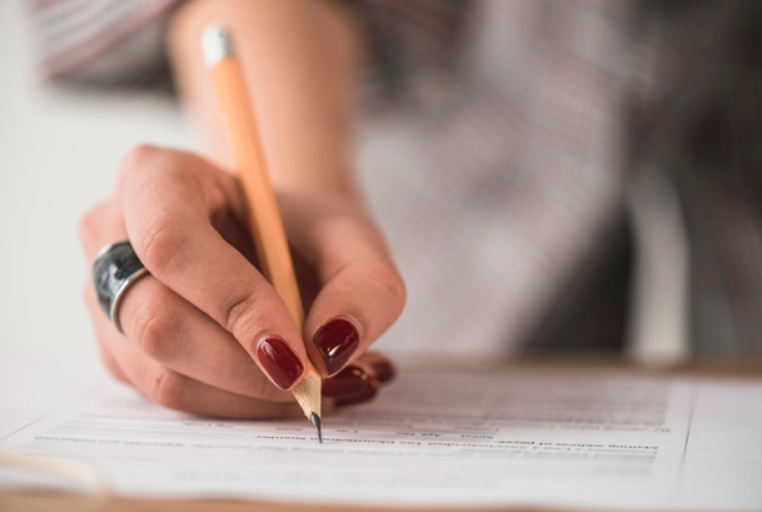
Image: Freepik
Tip the pen at an angle between 30 and 45 degrees, and then put the tip on the paper. With this position we will have taken the first step to have a constant writing and achieve a good artistic calligraphy.

Step by Step
Forbidden to write! Yes, it is not yet time to start writing. The first thing we will do to learn artistic calligraphy is make straight and curved strokes.
It is necessary to know how to make parallel lines to achieve the long-awaited symmetry of artistic calligraphy. Therefore, you must perform straight lines of different size and inclination.
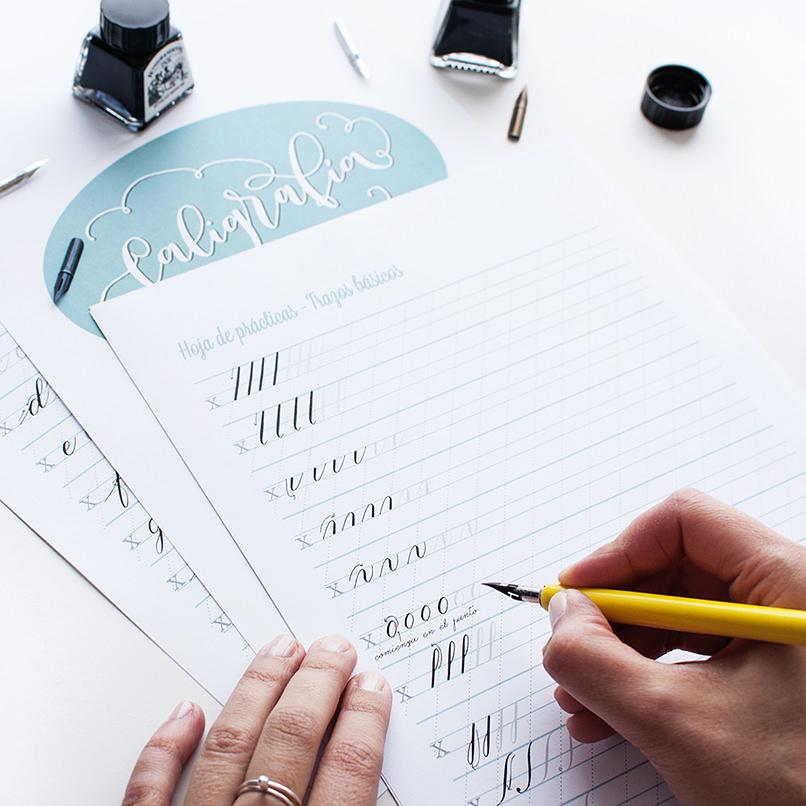
Image: The cat in boots
Once you get to make perfect (or almost perfect) lines, try curved and zigzag strokes. Practice makes perfect, so the only way to master the technique is to practice and make mistakes.
Pressure as part of the technique
Above we talk about the line drawing and here a trick: to make uplines apply less pressure than when doing downlines. By applying more pressure to the pen, you will get thicker lines.
It is also important to consider the space between lines so that the artistic calligraphy is as balanced as possible visually. You must be very clear about this point, even before you start writing.
Starting to write
Once you get your hang of it, it’s time to practice writing with a personal handwriting style. The idea is that we can maintain the same style throughout the text, that will be, a priori, the great challenge.
You can start practicing artistic calligraphy by writing letters and little by little go to complete words, and then move on to writing sentences.

Image: Freepik
After good hours of practice you will feel ready to replicate some style of artistic calligraphy. Remember that the more you practice the better your calligraphy will be.
I admit that my handwriting is not the prettiest yet, but following these tips it looks much better. Don’t be discouraged! For now, I’ll keep practicing until I get an enviable artistic calligraphy. Do you join the club? 👀


![✒️ How to learn artistic calligraphy? Guide with step by step [2021]](https://graphichow.com/wp-content/uploads/2021/03/1614820829_How-to-learn-artistic-calligraphy-Guide-with-step-by-step-750x536.jpg)